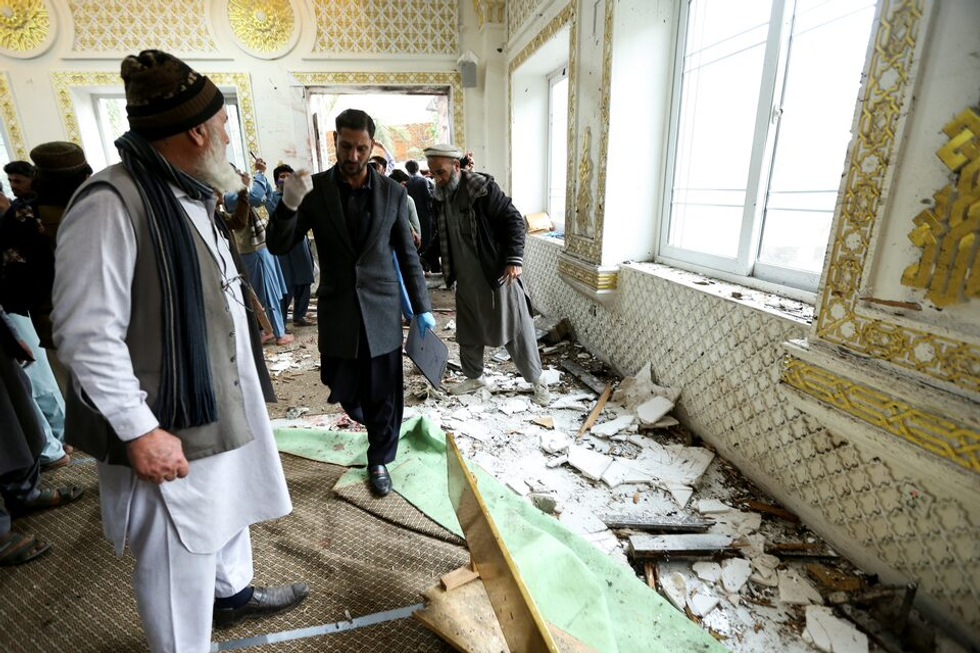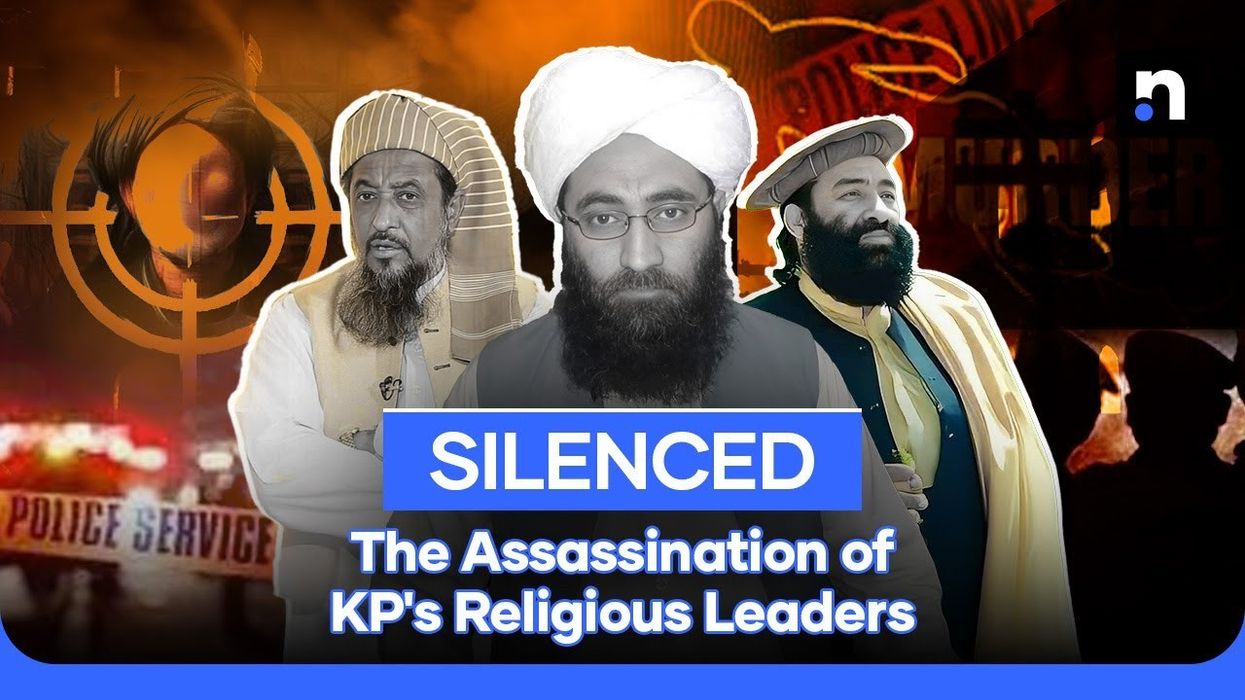What’s fueling the rise in killings of religious leaders in Pakistan’s KP?
Security analysts believe these attacks are not random acts of violence but rather part of a broader resurgence of militant activity in the region

Kamran Ali
Correspondent Nukta
Kamran Ali, a seasoned journalist from Khyber Pakhtunkhwa, Pakistan, has a decade of experience covering terrorism, human rights, politics, economy, climate change, culture, and sports. With an MS in Media Studies, he has worked across print, radio, TV, and digital media, producing investigative reports and co-hosting shows that highlight critical issues.
Province records 1,746 terrorism-related incidents since 2021, with numbers nearly doubling each year.
Data also indicates a rise in suicide attacks, with 68 reported since 2021.
Security expert says that around 40 terror groups are operating across KP, with TTP being the primary group.
Terrorist violence has escalated sharply across Pakistan’s Khyber Pakhtunkhwa (KP) province, with an especially troubling rise in targeted attacks on religious leaders in recent months.
The uptick in such killings has sparked deep concern among communities and experts alike, raising urgent questions about the motives behind this renewed wave of bloodshed.
Security analysts believe these attacks are not random acts of violence but rather part of a broader resurgence of militant activity in the region. Religious leaders, they say, are increasingly being targeted as extremist groups seek to reassert control and sow fear by striking at figures of moral and communal influence.
A pattern of unsolved killings
In one of the latest incidents, unidentified gunmen shot and killed a local cleric in the Sipah area of Bara tehsil in Khyber district on Monday. The victim, Mufti Shakirullah, had just finished leading prayers at Masjid Bilal and was on his way home when he was ambushed.
“The attackers managed to flee the scene,” said Javeed Khan, a local police official. He told Nukta that Shakirullah had no known personal enmities, but police have launched an investigation to determine the motive and identify the perpetrators.
Earlier this year, on January 27, Maulana Qazi Zahoor was similarly gunned down in Peshawar while returning home. His brother, Qazi Attaullah, expressed frustration over the stalled investigation.
“Despite several meetings with officials, there’s been no breakthrough,” he told Nukta. “We just want to know who killed my brother—and why.”
Police say inquiries are ongoing, but no concrete leads have emerged.
At least 43 clerics killed in four years
The scale of the violence paints a grim picture. Since 2021, KP has witnessed at least 1,746 terrorism-related incidents, with the number of attacks nearly doubling each year - a stark indicator of the province’s worsening security landscape. Among the casualties are at least 43 religious scholars who have been killed over the past four years.
Data from the South Asia Terrorism Portal (SATP) reveals a disturbing escalation in violence across Khyber Pakhtunkhwa in recent years. In 2021, the province recorded 169 terrorism-related incidents - a number that climbed to 225 in 2022, then nearly doubled to 472 in 2023. The trend continued into 2024 with 702 reported incidents, while 178 have already been documented in the first few months of 2025.
 In this file photo, people inspect damage, at the site of a suicide bomber attack, on the day of Friday prayers, at an Islamic seminary in Akora Khattak, Pakistan, on February 28, 2025. Reuters
In this file photo, people inspect damage, at the site of a suicide bomber attack, on the day of Friday prayers, at an Islamic seminary in Akora Khattak, Pakistan, on February 28, 2025. Reuters
Experts link this sharp rise in violence to the Taliban’s return to power in Afghanistan in 2021, which appears to have emboldened militant groups operating in Pakistan. Since then, there has been a marked shift in tactics, with a growing number of targeted attacks on security forces and high-profile individuals, including religious clerics and community leaders.
The data also points to a resurgence in suicide attacks. Since 2021, at least 68 suicide bombings have been recorded—two in 2021, eight in 2022, peaking at 28 in 2023, followed by 15 in 2024. So far in 2025, five such attacks have taken place.
Since 2021, terrorism-related violence has claimed the lives of 733 civilians and 1,150 security personnel. In addition, at least 43 religious leaders, politicians, and tribal elders have been assassinated, indicating a shift in militant focus toward security forces and key community figures, rather than indiscriminate civilian targets.
This marks a notable departure from earlier trends. Between 2006 and 2020, 5,130 civilians were killed in such attacks, compared to 2,383 members of the security forces—underscoring a significant change in both strategy and intent.
Killing of prominent religious scholars
Why are religious leaders being targeted?
Security expert Shamim Shahid attributes the spike in attacks on religious figures to the complex and evolving militant landscape in Khyber Pakhtunkhwa. According to him, nearly 40 terrorist groups are currently active in the province, with the Tehrik-i-Taliban Pakistan (TTP) operating as the dominant umbrella organization.
"Smaller factions - such as those led by Hafiz Gul Bahadar, Gandapur, Maulana Faqir Muhammad, Lashkar-e-Islam, and Harkat Inqilab Islam - function under the TTP’s umbrella," Shahid explained. "These splinter groups are not ideologically divided. They are strategically formed to enhance operational flexibility and coordination."
While no group has claimed responsibility for the killings of high-profile clerics like Mufti Munir Shakir and Maulana Hamidul Haq, Shahid suspects the Islamic State (ISIS) could be behind attacks specifically targeting JUI leaders. He suggests these assassinations are part of a broader proxy war involving both internal and external actors.
"Religious scholars are being deliberately targeted in these conflicts," he said. "Many of them were either witnesses to or involved in the ideological planning of what was once called jihad in Afghanistan. Silencing them now serves a purpose."
Shahid noted that while the Afghan war was once glorified as a holy struggle, many of its architects and facilitators remain in Pakistan - and are now being eliminated to suppress inconvenient truths.
Resurgence of instability
The resurgence of terrorist violence in the KP is closely linked to past policy decisions and shifting regional dynamics, experts say.
Speaking to Nukta, senior journalist and security analyst Ismail Khan said that former chief of army staff Gen Qamar Javed Bajwa and ex-ISI chief Lt Gen Faiz Hameed played key roles in facilitating the return of TTP operatives by lifting the ban on the group in exchange for promises of disarmament and surrender.
“However, the peace talks eventually collapsed,” Khan noted. “The militants never surrendered their weapons, and the failure to fully integrate the former Federally Administered Tribal Areas (FATA) into the national mainstream only added to the instability.”
 People stand amid the rubble, following a suicide blast in a mosque in Peshawar, Pakistan February 1, 2023. Reuters
People stand amid the rubble, following a suicide blast in a mosque in Peshawar, Pakistan February 1, 2023. Reuters
Terrorism analyst Mehmood Jan Babar added that Pakistan’s inconsistent counterterrorism strategy has contributed to the reemergence of militant activity. “These groups want to freely carry weapons and reestablish their presence in the tribal belt,” Babar said. “But post-FATA merger, that’s no longer legally or politically feasible. If such demands are accepted, it would be akin to conceding victory to them.”
Babar further explained that global powers -- including the U.S., China, Iran, India, Russia, and European nations - are reshaping regional policies to safeguard their strategic interests, especially concerning Afghanistan. “Pakistan’s geographic and political role in this evolving equation is critical, and that’s why KP remains a key flashpoint,” he said.
Why is a religio-political party in ISIS’s crosshairs?
Ismail pointed to growing ideological rivalries between extremist factions, particularly between ISIS and the Jamiat Ulema-e-Islam-Fazl (JUI-F).
He noted that Mufti Noor Wali, before becoming the TTP chief, had authored a booklet acknowledging past Taliban missteps - especially attacks on public places - and advocated a shift in strategy to gain local support. “As a result, the TTP now limits its operations to targeting security forces,” Khan explained.
ISIS, on the other hand, views the JUI-F as a direct ideological competitor. “Maulana Fazlur Rehman’s strong rhetoric is one factor,” said Babar. “ISIS is also furious that the JUI-F, along with the Afghan Taliban, played a role in launching operations against them in Afghanistan. These killings are an act of retaliation.”
Babar noted that while ISIS does not maintain a wide operational footprint in Pakistan, it has made JUI-F leaders, particularly in Bajaur, a primary target. “Local JUI clerics in Bajaur had issued religious verdicts declaring ISIS members non-Muslims. This has also fueled their vendetta,” he added.
LEAs' efforts and investigation
Qasim Ali Khan, Capital City Police Officer (CCPO) Peshawar, highlighted the strategic vulnerability of Khyber Pakhtunkhwa due to its proximity to the Afghan border. He noted that the region has been especially susceptible to the aftershocks of political and security shifts in Afghanistan, particularly following the U.S. withdrawal.
In an interview with Nukta, Khan explained that while public spaces were once the primary targets of terrorist attacks, the focus has now shifted. “Security forces and police are being specifically targeted because they are at the forefront of this battle,” he said.
Khan also addressed the groups responsible for the recent rise in violence. He confirmed that most of the incidents can be traced back to the TTP, but pointed out a troubling new trend: a specific group has been targeting religious scholars. This worrying development is being tackled through coordinated operations between local police and the Counter Terrorism Department (CTD).
“This war has been ongoing for over two decades,” Khan said. “Although the core of terrorism has been significantly weakened, efforts to dismantle its remaining elements are still very much underway.”











Comments
See what people are discussing